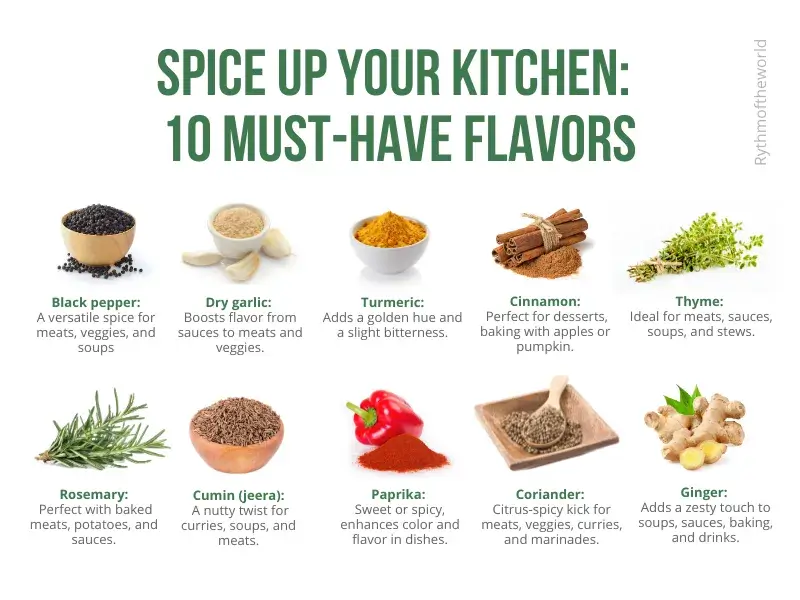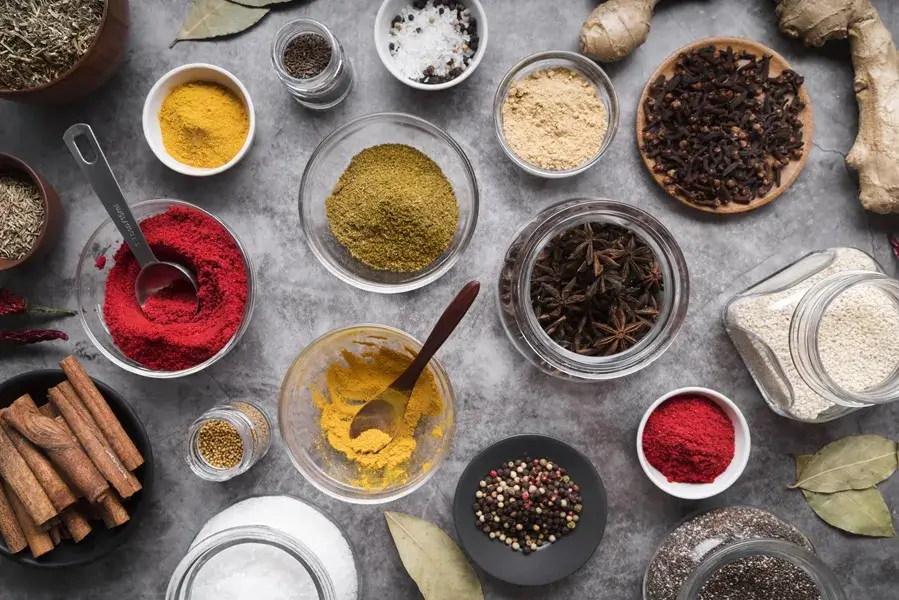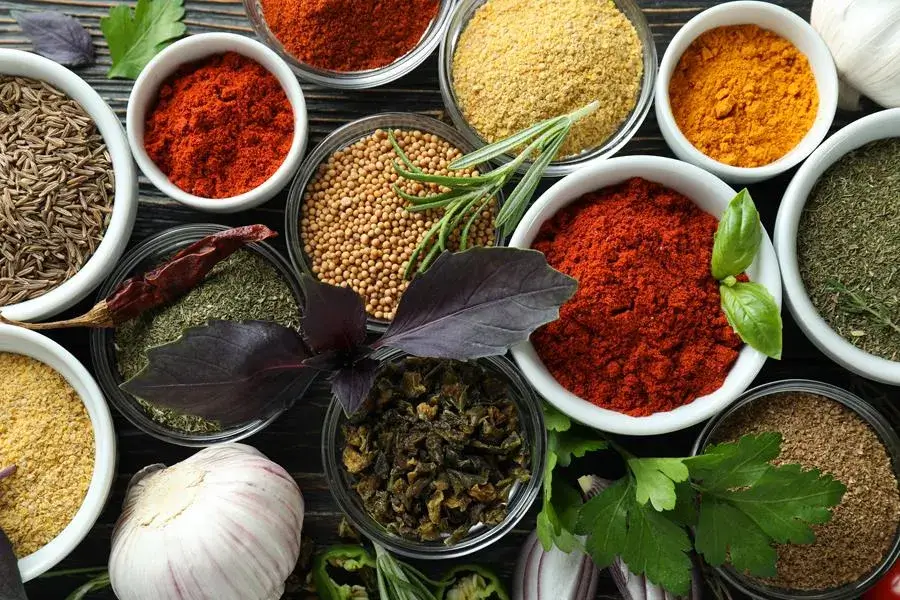From the history these small treasures conquered the by altering empires, initiating wars, launching explorations and drastically transforming international commerce, all for a single dash of pepper or cinnamon. It’s time to find how these tiny treasures shaped global society.
A pinch of history: how spices shaped the world
For centuries, spices have not only been appreciated for their unique flavors but also for their healing powers and cultural significance. Spices were used to fight infections, strengthen one’s health, and even preserve food.
Their alluring properties played a pivotal role in human migration and trade, as well as forging global connections. Civilizations in Asia and the Middle East began trading prized spices like cinnamon and pepper as early as 1000 BCE. It was later in the Classical Era that the Silk Road got filled with the exchange of spices, ideas, and multiple opportunities across continents.
Did you know that black pepper was so valuable in the Middle Ages that traders called it “black pearls”? People could even pay taxes and get a real estate! For a bag of expensive spices you could buy not only clothes or weapons, but even freedom. Amazing, isn’t it? Moreover, the aromatic blends aided in facilitating travels and geographical discoveries. For instance, in 1492, Christopher Columbus set on a journey to India to retrieve the delicate spices for the crown, and in his efforts ended up discovering America.
This global craze for spices dramatically changed agriculture and the ecosystems of the world while fueling the new trading companies of the world, banking, and the stock markets.

Herbs vs. spices: what's the real difference?
When the terms “herbs” and “spices” come up, they are incorrectly categorized as a single unit – but they aren’t one! But knowing the difference improves your overall perception of cooking. Let’s break it down.
Herbs are the fresh or dried leaves of plants such as basil, parsley, and mint. They are added toward the tail end of cooking or sprinkled atop the finished dish for more aromatic value.
Spices are bolder than herbs and have stronger taste due to their origin. Spices derive from other parts of the plant: seeds, bark, roots, fruits and flowers. They are added earlier in the cooking process to release their full potential.
Seasonings are essentially dried ingredients that are more concentrated, which means you can use them in smaller amounts than spices while still achieving that same bold flavor. Unlike herbs, they enhance both flavor and aroma but don’t bring any heat to the table.
Fun fact: Coriander is a plant that comes with leaves dubbed cilantro and its seeds turn into coriander spice.
How to pick the best seasoning
Choosing the right spices and herbs isn’t just a foodie flex — it’s the foundation of great flavor. But how do you spot the real deal and not end up with bland, dusty leftovers?
Here’s what to look for:
- Aroma first: Fresh spices have a strong, distinct smell. If they’re faint or musty, they’ve likely lost their punch.
- True color: Spices should look vibrant and natural. Faded or overly bright shades can mean poor quality or additives.
- Whole > Ground: Whole leaves and seeds hold flavor better. Grind them fresh when you can for the best taste.
- Smart packaging: Go for sealed, opaque containers that keep out air, light, and moisture.
- Check dates & origin: Spices do expire! Most stay fresh for 6–24 months. Bonus points for spices from flavor-rich regions like India, Turkey, or Mexico.
- Clean ingredients: Quality spices should be just that — pure spice, no fillers or flavor enhancers.
Fresh, natural spices don’t overpower — they elevate. Master the art of making savvy choices, and your homemade meals will boast flavors as if they were crafted by a professional chef.

Must-have spices for every kitchen
Spices do more than just flavor your food — they fill your kitchen with irresistible aroma and even bring health benefits to the table. A well-stocked spice rack with a few essentials can transform everyday meals into something special.
- Black Pepper – A true all-rounder! Adds heat and depth to everything from veggies to meats.
- Salt – No dish is complete without it. Try sea, Himalayan, or rock salt for unique flavor twists.
- Garlic – Fresh or dried, it brings bold flavor to sauces, soups, marinades, and stir-fries.
- Turmeric – With its golden hue and antioxidants, it’s perfect for curries, rice, and hearty sauces.
- Cinnamon – Not just for sweets! Adds warmth to desserts and richness to meat dishes, especially in Middle Eastern cuisine.
- Thyme – Earthy and aromatic, it’s a go-to for roasted veggies, meats, and poultry.
- Rosemary – Pairs beautifully with potatoes, fish, and meats, bringing a piney, savory note.
- Nutmeg – Adds cozy depth to desserts, sauces, and creamy drinks.
- Cumin – A must for bold, earthy flavor in curries, stews, and Middle Eastern favorites like hummus.
- Basil – Bright and fresh, it shines in tomato sauces, pasta, pizza, and salads.
Spices do more than boost flavor — they can completely transform a dish and even lift your mood. The right spices make food more delicious, aromatic, and nourishing, turning your kitchen into a warm, inviting space.
Chef’s spice tricks: add flavor like a pro
Got a bunch of spices but not sure how to use them right? Don’t worry — with a few chef tips, you can turn any meal into a restaurant-worthy dish. It’s not just the recipe — it’s how you use your spices. Handle them right, and they’ll add depth, character, and mouthwatering flavor.
Ready for the chef’s tricks:
- Add in layers: Tough spices go in early, dried herbs mid-way, and fresh herbs at the end to keep their aroma vibrant.
- Toast or sauté: Wake up spices like cumin, turmeric, and curry by toasting them dry or in oil before adding them in — it deepens the flavor.
- Less is more: Start small and taste as you go. It’s easier to add than to fix.
- Balance the flavor: If your dish needs a little lift, try a splash of lemon juice, vinegar, or a touch of honey.
- Let it rest: Give your spices a moment — time brings out their richness.
Cooking isn’t just following steps — it’s about trusting your senses. Treat spices like your palette of colors, and even the simplest dish can become a masterpiece. That’s the secret behind that irresistible restaurant taste!

Author

Alexandra Mukhina
Content writer on https://rythmoftheworld.com Experienced linguist and translator with a knack for crafting and refining diverse content. My goal is to produce engaging, informative texts that captivate readers. Passionate about reading, music, traveling, and exploring new avenues of personal growth.



